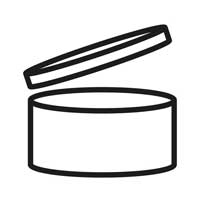Millets are a group of highly variable small-seeded grasses, widely grown around the world as cereal crops or grains for human food and as fodder providing food security to millions of households and contributing to the economic efficiency of farming.
Millets are considered to be the next super food or nutri-cereals of the world because of their high nutritional content. They are gluten free, non- allergenic and good sources of proteins, carbohydrates, dietary fibre and essential amino acids.
Traditionally, India has had a high rate of millet consumption and cultivation. Resilient to climate change, Millets are hardy crops that have a low carbon and water footprint. They can grow on poor soils with little or no external inputs and can withstand high temperatures, making them ideal for the diverse physiographic divisions of India.
The most important species in India include – Foxtail Millet, Finger Millet, Barnyard Millet, Browntop Millet, Little Millet, Kodo Millet, Pearl Millet, Proso Millet and Sorghum.
India is well placed to raise output and drive exports to tap into a growing global market. India produces more than 170 lakh ton ( 80% of Asia’s & 20% of global production) of millets. The global Millets market was valued at $9.95 Billion in 2020 and is projected to reach $14.14 Billion in 2028, growing at a CAGR of 4.5% from 2021 to 2028 .
However, the millet supply chain suffers from inconsistent supply and demand that prevents its commercial viability. Lack of public awareness about nutritional benefit of millets has led to limited adoption of millet-based products. Limited distribution and lack of market knowledge has led to sub-optimal reach, lower price realization and wastage.
Millets have the potential to help achieve the sustainable development goals (SDGs) —mainly SDG 2 (Zero Hunger), SDG3 (Good Health and Well-being), SDG 12 (Sustainable Consumption and Production), and SDG 13 (Climate Action).
Understanding the need to promote the diversity and nutritional and ecological benefit of millets, after the proposition by the Government of India, United Nations has declared the year 2023 as International Year of Millets (IYOM).
In its pursuit to create an innovation driven India and celebrate the International Year of Millets, Atal Innovation Mission, NITI Aayog has launched 4 challenges of national importance and societal relevance. The solutions to these challenges will help bridge the gaps in the millet supply chain – promoting sustainable production, enhanced nutrition, wider acceptance, and increased consumption.
Processing converts the inedible grain into edible form and thereby enhancing its quality. Processing of millets plays significant role during its utilization as food. Longer shelf life, aesthetics of food and flavour and ease of cooking is what necessitates processing.
However some millets require multiple processing for optimization of grain recovery and optimization of polishing to retain their nutrition value
Develop solutions to improve the efficiency of millet processing (dehulling, separation, polishing etc.) while retaining the nutritional value

Processing of millets face several hurdles owing to variation in size of various millet types and low shelf life of the processed millets. The grains vary in terms of shape, nature of grain surface, hardness, husk-grain bonding etc. Furthermore, there are variations within the same small millet crop due to variation in varieties, cultivation practices, and microclimate across production regions
Develop machinery and / or infrastructure for small scale decentralized processing that is affordable and easy to use for farmers, FPOs and consumers.

Millets are extremely nutritious and are proven to have health benefits. However, millets have poor shelf life once processed due to its intrinsic enzyme activity (lipase activity, lipid oxidation etc.) that causes rapid development of rancidity and bitterness. Millet products are also prone to moisture and water activity. Quality assurance thus greatly depends on different pre-treatments and / or storage conditions.
Develop solutions to improve the shelf life of millets – grains, processed grains, flours etc. to make it comparable to competing crops

Millet supply chain suffers from inconsistent supply and demand that prevents its commercial viability. While the lack of access to HYV seeds has led to low crop productivity, the lack of public awareness about nutritional benefits of millets has led to limited adoption of millets as a ready to cook cereal. In addition, limited distribution and lack of market knowledge have resulted in sub-optimal reach, lower price realization and wastage.
Develop market linkage solutions to strengthen the supply of inputs (HYV seeds etc.) and outputs (distribution, market access etc.)
